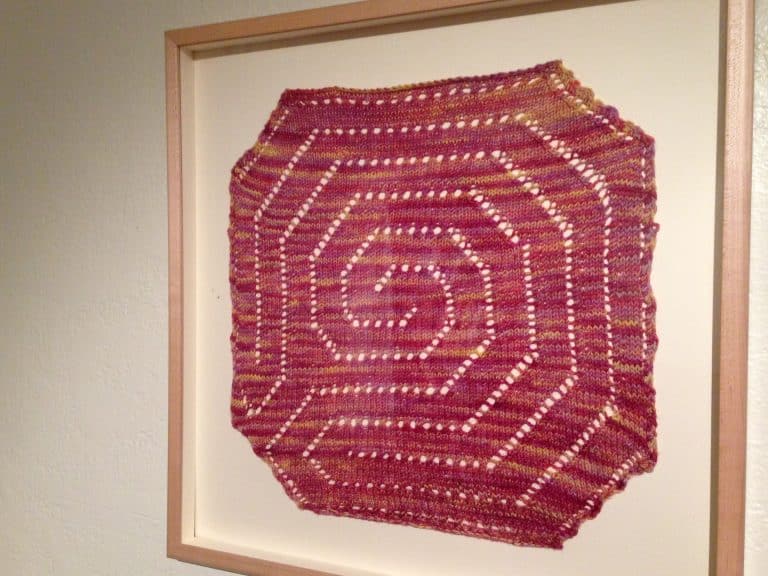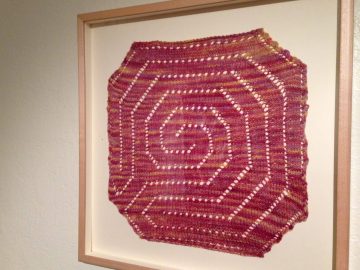A couple of weeks ago, I was asked in a comment to elaborate on my remark that labyrinths are a symbol of Heavenly Mother and share other symbols of Her. I think it is important to remember that symbols means as much as you want them to mean. For example, the sacramental bread and water can be simply bread and water, but it can mean more than that depending on the person’s mindset. I would even say a person could even have a wonderful personal relationship with Christ without using the bread and water symbolism at all. The importance of symbolism to a person probably depends on their own spiritual languages.
My use of the labyrinth as a symbol of Heavenly Mother comes from Sue Monk Kidd’s The Dance of the Dissident Daughter. In it, Kidd elaborates on her journey to find the Feminine Divine and incorporate it in her life. In the book she uses the Minoan myth of Ariadne to describe her journey. She states,
“As the Great Mother, Ariadne was the source of all that is, and her womb was envisioined as a labyrinth that humans threaded on their journey through life, death, and rebirth. Her role was that of sacred guide, the one who aided person through the dark, difficult passages.” The Dance of the Dissident Daughter, page 109
Because the book resonated with me so much, when I finished reading Dance, I knit a finger labyrinth and framed it for our wall, as a personal and subtle reminder of the Divine Feminine.
If you are looking for symbols that fit a Mormon paradigm, look no further than the tree. In Mormonism we give God the Father a name: Elohim. In his paper, How to Worship Mother in Heaven (Without Getting Excommunicated), Kevin Barney makes the case that we also know Heavenly Mother’s name: Asherah. Asherah is often translated to “grove” in the King James Version of the Bible. Mormonism has its own grove imagery, as well as other tree symbols. Besides the garden story’s Tree of Good and Evil, we have the olive tree of Jacob 5, as well as the Lehi and Nephi’s Tree of Life vision. Daniel C. Peterson has connected Nephi’s vision with the tree symbol of Asherah.
In Proverbs 8, Wisdom is given the female gender and a godlike role, “Doth not wisdom cry? and understanding put forth her voice? She standeth in the top of high places, by the way in the places of the paths. She crieth at the gates, at the entry of the city, at the coming in at the doors.” The whole chapter is like a hymn to Wisdom, which you can associate with the Heavenly Mother. In fact, in Luke 7:35, it says, “Wisdom is justified of all her children,” with her children being John the Baptist and Christ in the previous two verses.
You could take anytime that the scriptures give God feminine traits as mentions of Heavenly Mother: a nursing parent? Hen gathering her chicks? It’s ok to even “make up” symbols- that’s sort of the point of symbols: for every day things to remind you of something greater. Symbols can be contradictory: Christ is both the rock and the living water. What two things could be more different? I personally like taking symbols from other traditions, but if maybe you think about Heavenly Mother while you hike up mountains, perhaps a mountain could be your personal symbol of Heavenly Mother.
What do you use to remind yourself of Heavenly Mother in your life? A song? A scripture? A painting?






8 Responses
A beautiful post. The wind makes me think of my Heavenly Mother.
I always cringe a bit when I see feminists cite Barney’s essay. Sure, it’s OK just in terms of its isolated content, without any consideration of the larger context of Mormon feminism or scholarship on heavenly mother. Considered in context, it’s a blatant erasure of the work and names of Mormon feminists who have written about Heavenly Mother. In the March 2012 issue of Sunstone devoted to motherhood and Mother in Heaven, Janice Allred writes:
In the same issue, Margaret Toscano notes
Holly, you’re right. I used Barney’s work because it came out around the time I was having my Heavenly Mother discovery for myself and in fact I still had it saved to my harddrive from back then. If you’ll notice, the post cuts suddenly short because I could have kept going about Heavenly Mother symbols, but this is a blog and if you go to long, people stop reading! I’m actually thinking of making this a series with different symbols featured. If I do, I’ll definitely use that Sunstone issue and the work of other people you mention. I recently got to hear Margaret’s slideshow presentation on goddess representations and it was really neat.
Thank you for adding this.
Ditto what Holly said. Thank you for adding this.
Holly, I’m glad you shared this here. I am vaguel familiar with Barney’s essay, and am grateful to learn of Janice Allred and Margaret Toscano’s responses.
Thanks TopHat! 😀
Thanks for this.
Tophat, I love the quote and idea shared about Ariadne, as well as the broader idea that we can look for Heavenly Mother anywhere and everywhere, and find our own symbols, especially because I often find myself thinking, “Where is my Mother here?”